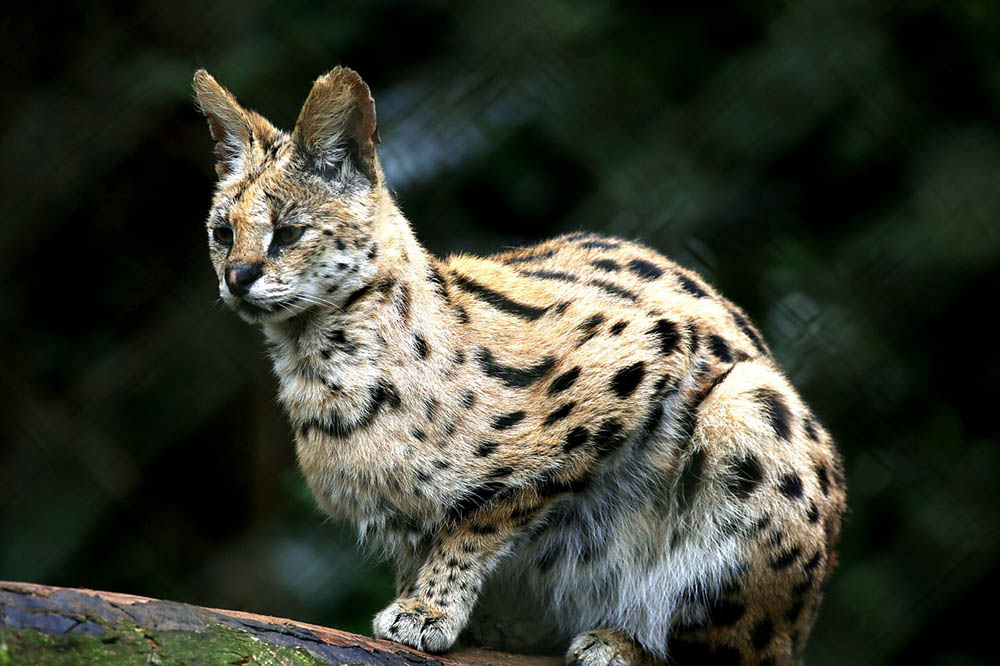Mexico is rich in wild cat species due to its diverse natural environment. Some of the best-known wild cat species are found in Mexico, such as the puma and jaguar, as well as some lesser-known species like the margay and jaguarundi.
Though populations are declining for wild cats all over the world, several of Mexico’s wild cats are adaptable and manage to thrive in the rainforests, coastal lowlands, deserts, montane forests, and savannas. Here are six types of wild cats in Mexico.

The 6 Types of Wild Cats in Mexico
1. Puma
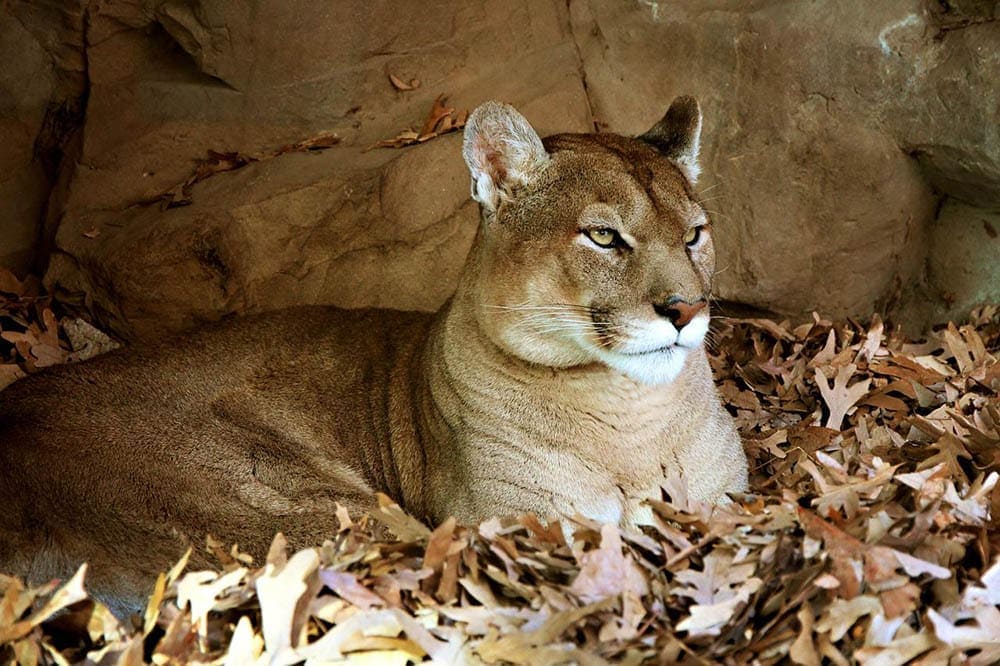
| Height: | 24–30 inches |
| Weight: | 136 lbs |
| Conservation status: | Declining |
The puma is a common wild cat that’s known by many names, including the mountain lion, Florida panther, cougar, Mexican lion, red tiger, and catamount, depending on its natural range. In Latin America, this cat is known as a puma. Because of the diverse range, pumas may come in anything from a buff or sandy brown to reddish-brown color, as well as shades of gray. The coat is uniform without many markings, but they do have dark brown or black patches on their faces and legs.
Pumas have the largest range of any New World cat, stretching from the Yukon in Canada to the tip of South America. They can live in coniferous, deciduous, and tropical forests, grasslands, swamps, semi-deserts, and a range of elevations. They follow prey migrations and have adapted to live in a variety of environmental conditions. Pumas are highly athletic and adaptable, good at swimming, climbing, and leaping, and consume a diverse range of terrestrial and marine prey animals. Though populations have disappeared from several areas in North America in the last century, they’re classed as least concern by the IUCN. The population is declining from human encroachment, habitat loss, and government-sanctioned predator control programs.
2. Bobcat
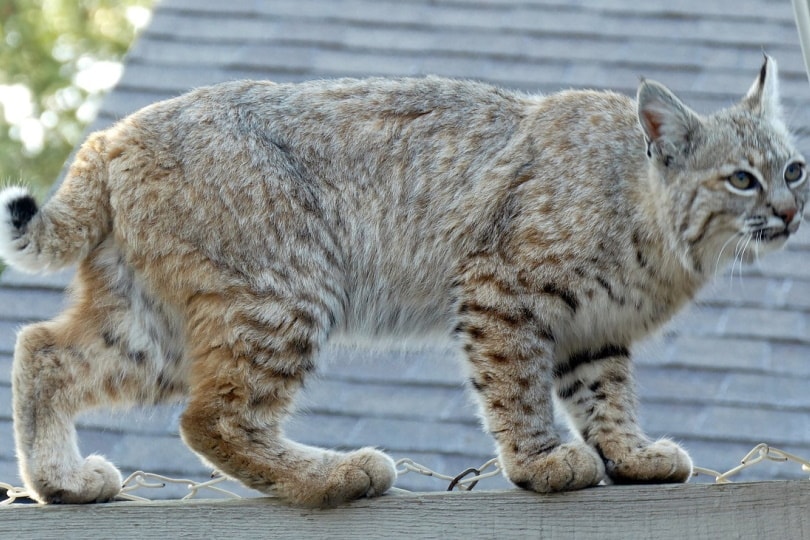
| Height: | 21 inches |
| Weight: | 13–29 lbs |
| Conservation status: | Stable |
The bobcat is a thriving wild cat species that are well-known to most people. They have soft, dense coats with light gray to reddish-brown fur and bars or spots in black or brown. The fur on the back is darker, while the underbelly is mostly white.
Bobcats have a diverse and expansive natural range that spans from southern Canada to northern Mexico. They can survive in a variety of habitats, including swamps, forests, deserts, and scrubland. Unlike most wild cats, bobcat populations are increasing. This is likely due to their adaptability, secretive nature, and opportunistic hunting. Bobcats also coexist easily with humans, though they’ve been hunted for fur, skin, and as trophy animals. They also face habitat fragmentation, habitat loss, and persecution as a threat to livestock.
3. Jaguar
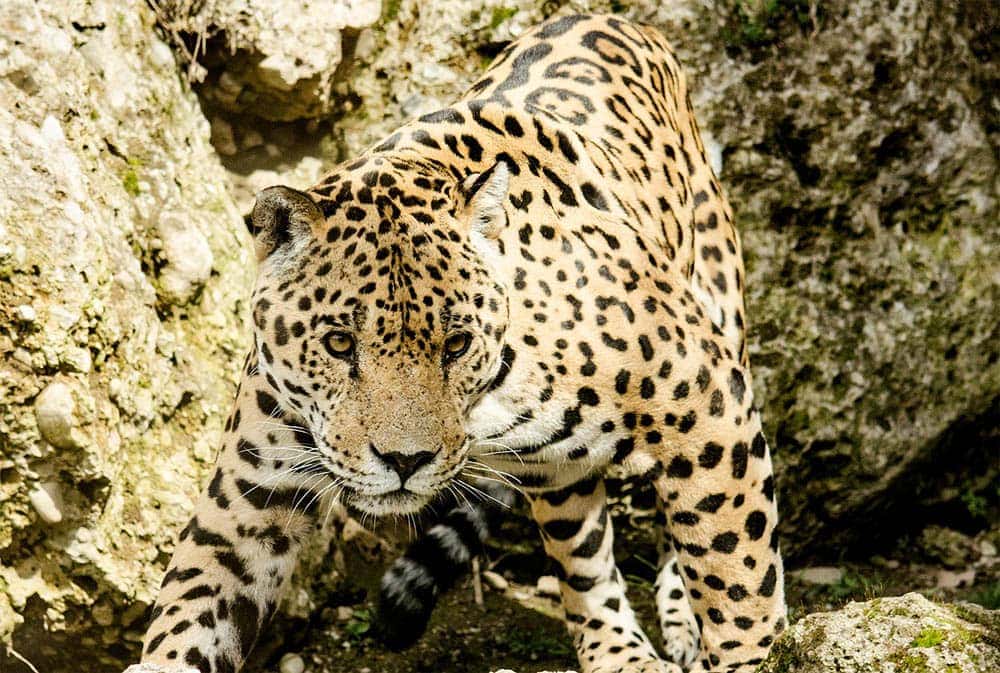
| Height: | 26–29 inches |
| Weight: | 70–304 lbs |
| Conservation status: | Declining |
The jaguar is one of the largest wild cats in the Americas and is often confused with the leopard, which is found in Africa and Asia. Though they have similar yellowish-brown to reddish-brown coats with black spots and blotches, they’re larger and stockier than leopards. Melanistic jaguars have been reported and seem to be more common among jaguars than other large cats.
Jaguars have a diverse range that includes the southern US and Central and South America. They inhabit seasonally flooded lowland rainforests, evergreen forests, swampy grasslands, dry scrub forests, and mangrove swamps. These predators primarily hunt on the ground using ambushing tactics, and they’re opportunistic hunters. They’re also good climbers and swimmers. The jaguar is vulnerable due to human conflict and loss of habitat. It’s classed as near threatened in the IUCN.
4. Jaguarundi
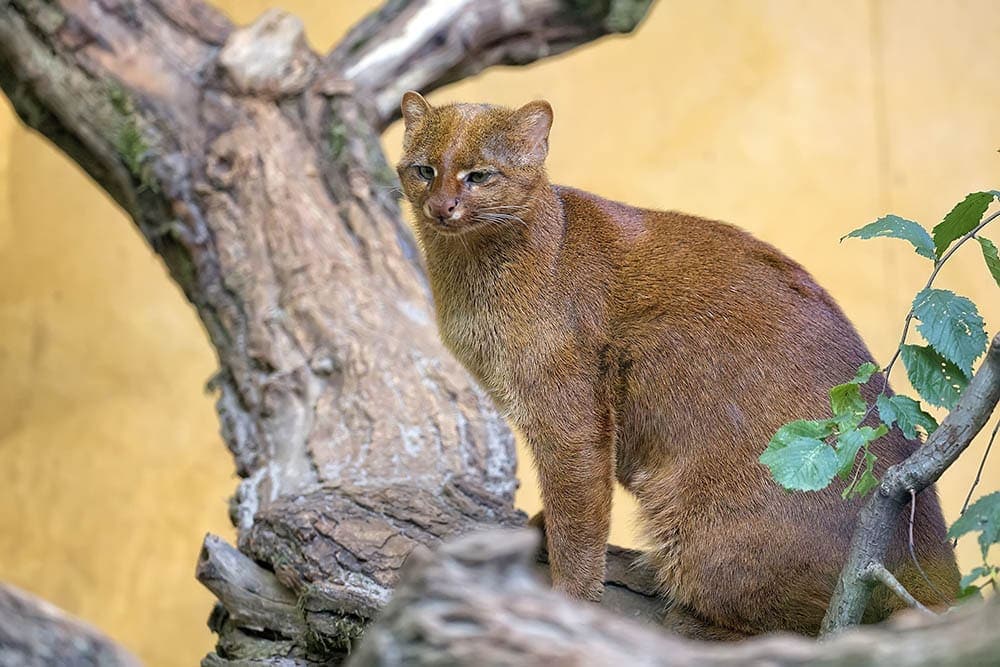
| Height: | 10–14 inches |
| Weight: | 6.6–15 lbs |
| Conservation status: | Declining |
The jaguarundi is a unique-looking small cat with a slender, elongated body and a small flattened head that resembles an otter. The coat is short, smooth, and unmarked, but comes in black, brownish-gray, and reddish-brown, depending on the environment. Despite the name, the jaguarundi is not associated with other small cats, they’re closer genetically to pumas and cheetahs.
Jaguarundis live in the lowlands from northern Mexico to central Argentina. They live in forests, savannas, dry scrub, swamps, and primary forests at low elevations. They prefer dense ground cover and spend time on the ground. Like other small cats, the jaguarundi is threatened by the ocelot and ventures into unprotected areas to avoid predation. It’s classed as least concern by the IUCN, but it’s threatened by the illegal fur trade, the illegal pet trade, habitat loss, persecution, and hunting for ornamental or medicinal purposes. Actual numbers are unknown, which makes determining the health of the population difficult.
5. Ocelot
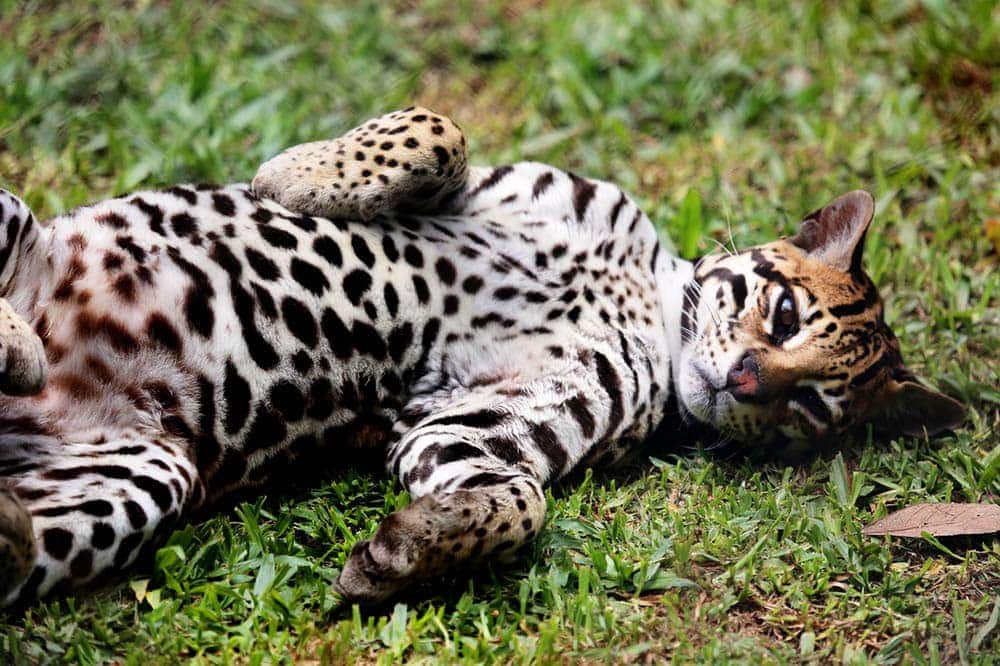
| Height: | 16–20 inches |
| Weight: | 17–33 lbs |
| Conservation status: | Declining |
The ocelot is a beautiful and well-known wild cat with distinctive spots and a rich tawny-yellow to reddish-gray coat. The markings are in streaks and blotches with black borders. The ocelot’s underbelly and insides of the legs are white with spots and rings or bars.
Ocelots have a vast range that encompasses altitude cloud forests, mangroves, and other areas of dense vegetation throughout southern Texas in the US to Mexico, Argentina, and Brazil. These opportunistic carnivores can survive in a variety of environments and prey on a range of different small- to large-sized animals. Though they can hunt arboreal species like monkeys and sloths, they’re generally ground hunters. They’re also good at swimming and climbing. Ocelots are classed as least concern by the IUCN and a protected species in most of its range, though they’re exploited by the pet trade, illegal hunting, the illegal fur trade, habitat destruction, and accidental run-ins with humans.
6. Margay
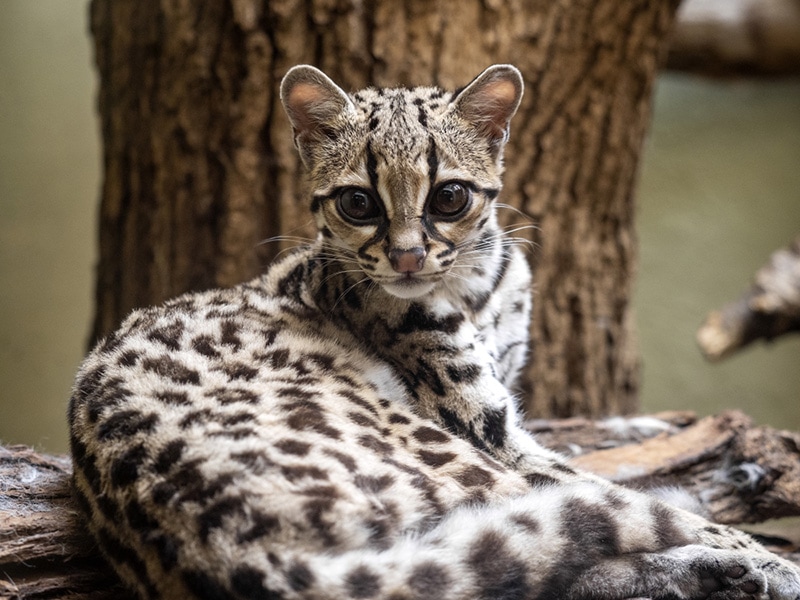
| Height: | 12 inches |
| Weight: | 5–11 lbs |
| Conservation status: | Declining |
The margay is a small, spotted wild cat similar to an ocelot in its coat and pattern. This cat has a brownish-yellow coat with black spots, stripes, and blotches, as well as thick, soft fur. The center of each spot has a rosette, like an ocelot, that’s pale but darker than the fur. The underbelly and insides of the legs are white.
Margays span from central Mexico through to Uruguay and northern Argentina. Overall, they’re a rare cat, though they’re concentrated in some areas. These cats prefer tropical and subtropical forested areas, where they live in the treetops. Though they’re among the most adaptable of small cats, they are often driven out of their habitat to unprotected areas by ocelots and other small cats. Margays are currently classified as near threatened by the IUCN Red List and at risk from deforestation, illegal hunting for pelts, illegal trade for the pet market, disease, and low reproduction.

Conclusion
Mexico’s diverse natural environment is a haven for a variety of cat species, from the majestic jaguar to the unique jaguarundi. Though some cat species are at risk of habitat loss, hunting, and other threats, significant conservation efforts have helped protect these treasured wild cats in Mexico and the rest of the Americas.
You might also be interested in:
Featured Image Credit: joelfotos, Pixabay
